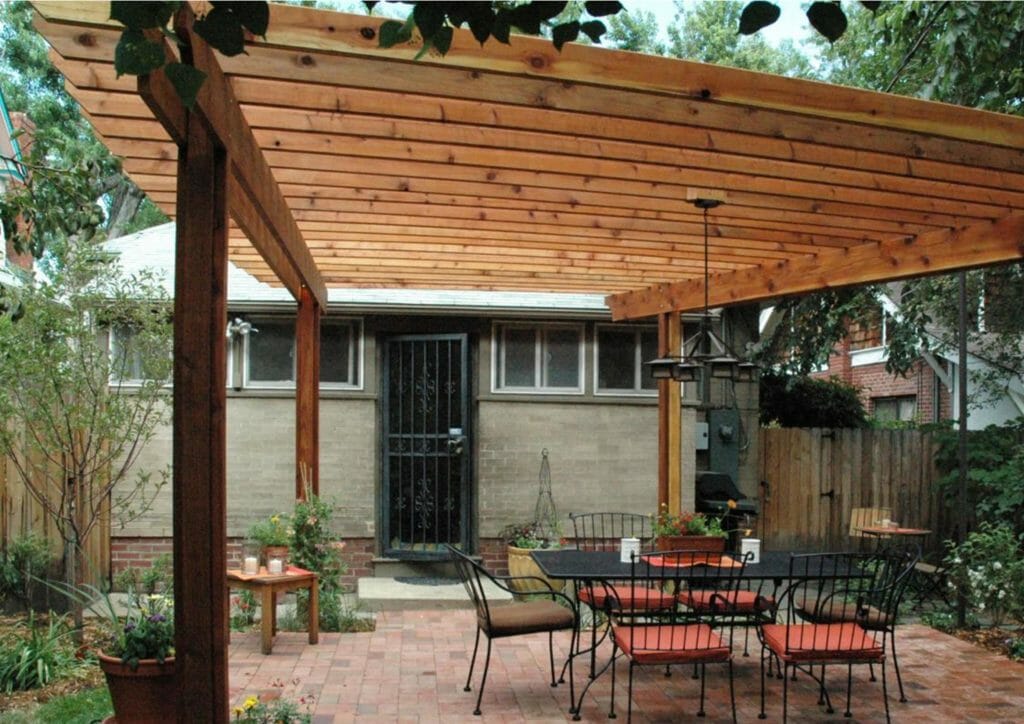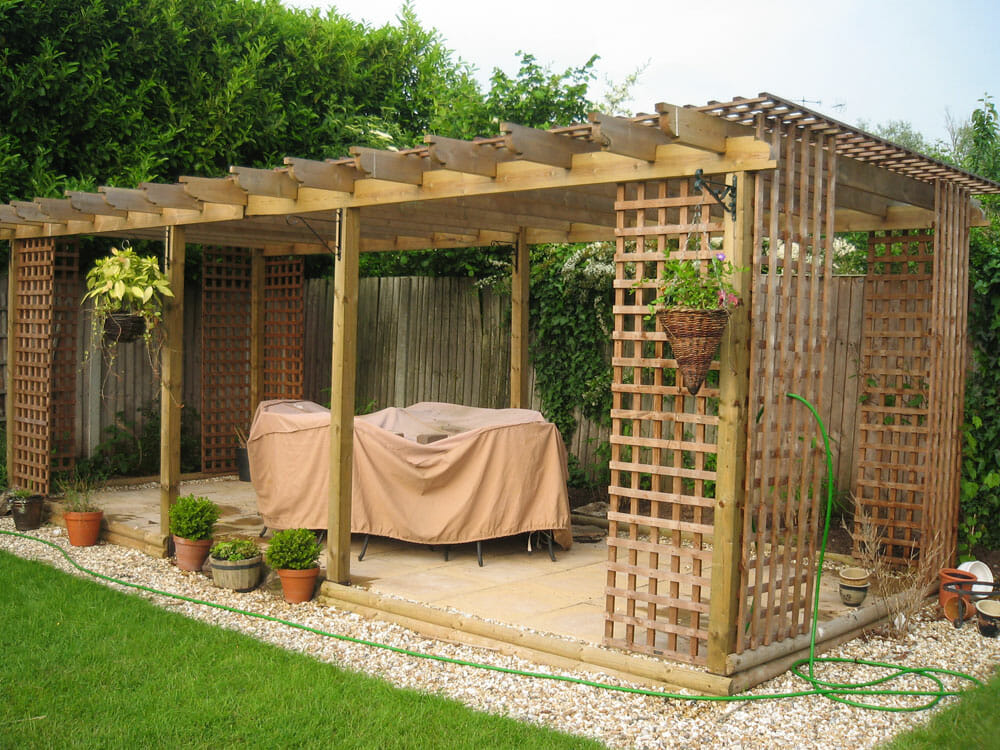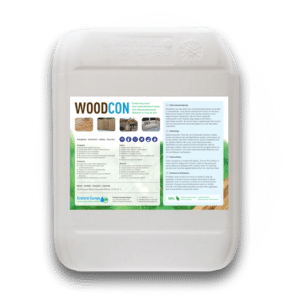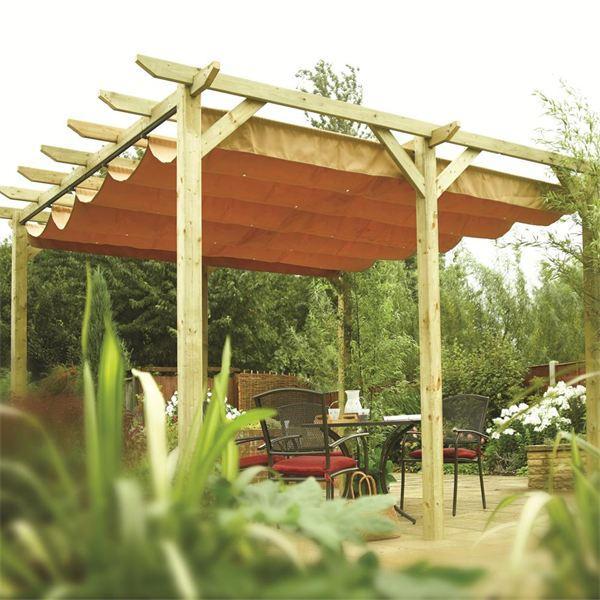Building and waterproofing a pergola

Such a beautiful pergola is an enrichment for almost every garden. Certainly if you have less real trees or tall shrubs, such a beautiful wooden garden element can add extra relief to your garden. Although a scaffolding tube pergola is also possible, most people prefer a real wooden pergola. That looks much more natural and therefore fits best in many gardens. And of course you use the pergola to grow beautiful climbing plants over and around it, making the whole a beautiful combination of wood and plants.
Have it installed or built yourself?

Of course you can have your new pergola installed. That is easy because you do not have to worry about it. But a do-it-yourself pergola can also easily be realized. Regarding the construction, it is of course a little less complex than – you name it – a garden house. And of course you can buy packages in which you will find all wooden parts pre-sawn. Including the necessary hardware such as angle irons, screws or bolts. But cutting and machining the wooden parts of your pergola yourself will also not be a huge challenge for many do-it-yourselfers.

Woodcon
- Very economical: depending on the porosity an average
1 liter is sufficient for 88 ft². - Available in 1 / 2,5 / 5 / 10 / 25 Liter.
Construction plan for your pergola
You naturally choose the shape of your pergola yourself. This can be a so-called roof pergola, which is actually an “open roof”. But the best known is the single pergola that consists of vertical posts that are interconnected with crossbeams. The characteristic sleepers, the so-called horsemen or riders, are placed on those crossbars at regular distances (think about 50 centimeters).
The easiest way is to build such a pergola with square posts, although you can of course also use round wood. Here we continue from square wooden posts. The base is formed by posts of 3 meters in length. Assume that your pergola must be approximately 220 centimeters high. You prevent that with the first best plant that slightly curves down, everyone has to stoop. In that case you can place the pole 80 centimeters deep in the ground, making the structure sufficiently strong. Use a ground drill to make the hole. With a shovel that is a terrible job, because the hole has to be dug out much larger than is necessary for the pole. You can choose the thickness of the posts yourself, but if you are looking for some strength and the pergola, for example, becomes a kind of roof, you will soon want to use square posts of 9 cm.
On top of the uprights you place the crossbars (think of a spirit level). They are often made from the same type of wood as the vertical uprights. You attach them to the uprights and to each other with the help of angle irons. As a last step, the cross riders can then be fitted. Some thinner wood can be used for this.
Waterproofing your pergola with Woodcon for many years to come

Woodcon is an excellent wood protecting product, it forms a completely invisible shield that attaches itself to the wood surface but also fixes itself into the micro fibres of the wood. Woodcon ensures that the wood surface becomes water-repellent, it prevents water from entering the wood. Woodcon is an environmentally friendly wood preservative that cannot peel, flake, crack or in any other way release itself from the surface of the wood. Woodcon helps to prevent damage from fungus, algae and moss growth. The risk of termites and woodworm from entering the wood is drastically diminished. Thanks to Woodcon you can enjoy your beautiful new pergola for many years to come.